კრის Grinter, 1 ივლისს, 2010 და ახლა კიდევ უფრო იშვიათად reoccurring სერია, vox populi! იმ გარეშე ნაწიბურების განვითარებას საშუალო სკოლა მოგონებები latin კლასი (გზით არ ბრალია ჩემი მასწავლებელი) მე მოუტანს თქვენ მდე სიჩქარე – სათაური უხეშად ითარგმნება “ხალხის ხმას”. აქ არის კიდევ ერთი ძველი e-mail, რომ მე გადარჩენის. ეს არის 100% real message, but of course I have redacted the real names and addresses to protect the innocent. Enjoy! I also highly encourage submissions of your own-
Winter 2008:
“Hi, I’m so glad I found you. ახლა, I hope you can help me. 1982, while camping at an old gold mining camp in the Mendocino National Forest I was bitten by a large brown spider. It took three days for the venom to pass through my system. On day three I was 95% blind, the bite swelled to a large grotesquely deep red bump on my arm. I’ll never forget the 12 hours the venom attacked me. The price I payed to survive this spiders venom was…….to loose absolutely all my body fat. I spoke with a doctor from Santa Rosa by phone from a friends place in (some small CA town). He knew about this spider and couldn’t believe I suvived the venom when I told him I lost all my body fat. He also told me it was impossible for someone to survive loosing all their body fat in 12 საათი. I reminded him that this was an impossible situation. He told me that this spider is being kept from the public. I believe this spider came from China or Russia. These spiders don’t share anything with other Cali spiders. They have big bodies and short stout legs. The female that bit me was about 4 inch’s and, had 5 males. Four years later, while living in the Hayward hills, I couldn’t believe my eyes, running across the floor, another one. This spider was about 6 inch’s. I know these spiders don’t climb walls or spin webs. They build nest’s, and obtain 4-5 males to protect her and find food. The female never leave’s the nest except…………when a larger female drives her out and, kills her males. This is when people are bitten by this spider, as she runs around looking for another nest. Bites are very uncommon. I wondered………….how big was the female that drove that 6 inch from her nest. და………….how big do they get. Can I find this spider on display at (your museum)? Is it possible to find all the information their is on this very dangerous spider?”
Continue reading Vox Populi, ტომი II
კრის Grinter, on June 26th, 2010 Welcome to volume eight of the inconsistently reoccurring series, Genius პრესისა. I came across this article recently regarding an endemic Puerto Rican butterfly. Who can tell me exactly why this report is misleading? It may be a little trickier than the standard GOP (I suggest discarding any previously associated acronyms with those letters). Hint, just telling me the butterfly in the picture is from Malaysia is not the answer I’m looking for!
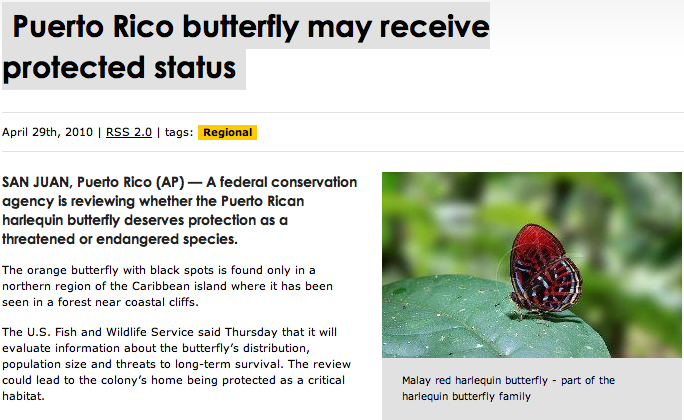
კრის Grinter, on June 23rd, 2010 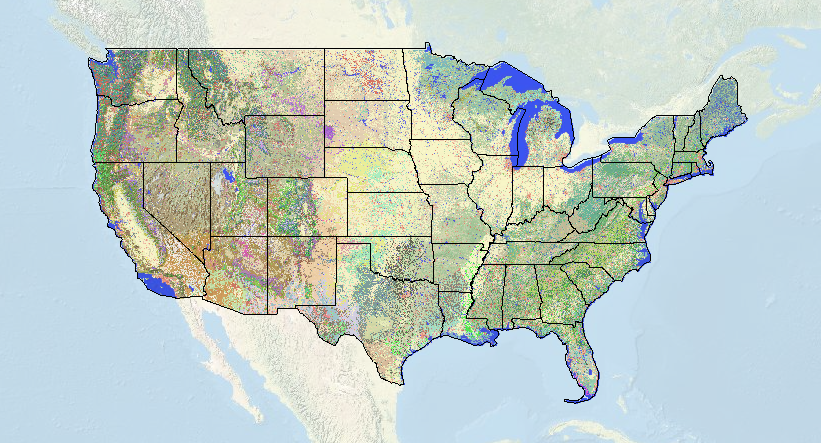
I’ve always wondered how to find the correct terminology for land cover in a given area. Usually, I just ballpark something along the lines of “oak chaparral”. But now I can use this awesome new map brought to us by the USGS/National Biological Information Infrastructure. The level of detail is amazing, and you can specify the degree of accuracy with a drop down tab (1-3). Now with a high-def US topo map I can see exactly where the largest stands of monterrey pine are (actually it’s a California Coastal Closed-Cone Conifer Forest and Woodland) so I can optimally place my trap this weekend.
Continue reading Landscape Cover Map
კრის Grinter, on June 18th, 2010 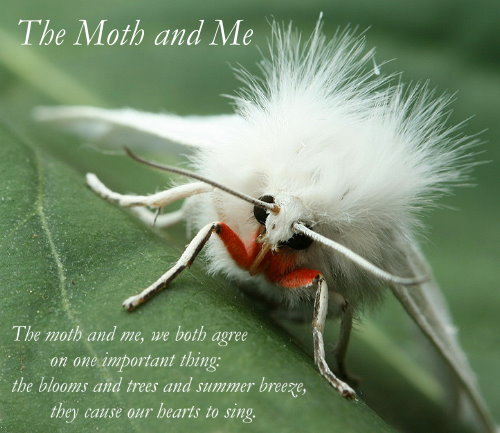
Welcome to The Moth and Me #12, and my first blog carnival. Despite blogging for a few months I have yet to take a look back and reflect on exactly how I became enamored with lepidoptera in the first place. Remembering a time or location where this happened is impossible, and like many of my colleagues and I’m sure many of my readers, I had a butterfly net and “bug cage” in hand as soon as I could walk. When it comes to entomology I believe almost everyone falls in love at first with a large and striking insect. For me it was a butterfly, naturally. I can remember staring for endless hours at the diversity of Ornithoptera and Papilio illustrated in Paul Smart’s famous book. Somewhere along the way in pursuit of something new I began to stray into the nocturnal world. Moths comprise the majority of the diversity of Lepidoptera; while there are nearly 11,000 species in the United States, only a few hundred are butterflies. This quickly opened a door (maybe into an abyss…) to the shocking abundance found everywhere around us. This amazing diversity has now drawn me deep into the biology and evolutionary history of the Lepidoptera. Editing these fourteen contributions of moth blogging together I just can’t help but to reflect back on some of my own mothing journey.

პerhaps if I was a child in Europe this moth (Deilephila elpenor porcellus) would have been the first to catch my eye. Over at Urban Moths Ron Laughton has discovered the stunning diversity in his own back yard in much the same way as I did growing up here in the US. Take a look at the types of traps he has been using, most of which he constructed himself. One of the best behaviors of moths is their willingness to dive headlong into the light. Not too far from Ron, Mike Beale has been blogging british moths as well. It can be pretty amazing just how similar our two faunas are (a few moths actually არიან the same).
Continue reading The Moth and Me #12
კრის Grinter, on June 11th, 2010 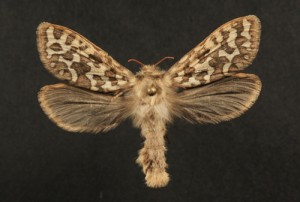
This moth is just about as rare as its paranormal namesake (except that it’s real) – it’s a Gazoryctra sp. in the family Hepialidae. They represent a basal lineage of the Lepidoptera and are commonly known as ghost moths or swift moths. Ghost – because males of some species are known to fly in true leks, where they hover up and down in grassy clearings at dusk while females observe. These same males also call for females with pheromones, a bit of a backward situation with insects. Swift- rather self evident, but boreal species have been known to be powerful flyers.
One of the features that help indicate this as a basal lineage is the placement of the wings on the body, some wing venation, reduced or absent mouthparts and the lack of a strong wing coupling device. These moths have a “jugum”, which is a small thumb like projection from the top of the hindwing. Other lineages of moths have a tight coupling mechanism known as the frenulum and retinaculum, where bristles hook the two wings together so they remain coupled during flight. When at rest the jugum folds around and probably helps keep the wings together – but not while in flight; the forewing is out of sync with the hindwing and flight is not dynamic (Scoble 1992).
In the Americas Hepialid biology is very poorly understood. Only a handful of life histories are described globally – all of which seem to be endophagous (boring) in plant root systems. Some early instar larvae may feed in the leaf litter or underground on the root system before entering the rhizome. Australia is fortunate to have a diverse and impressive fauna of Hepialidae – many are brilliantly colored and enormous (250mm or up to 12 ინჩი!), and a bit better studied. Some larvae are even common enough that aboriginal tribes have used them as a staple food source.
But back to this moth in particular. I collected it in my black light trap last August up in the Sierra Nevada around 10,500 ფეხები. The species is unknown, and may likely be new. The most frustrating part is that it is the only specimen known to science. The entire genus is very rare, except for one or two commoner species, only a few dozen specimens exist. So is it a female of a species described only from a male? A freakish aberration of an otherwise known species? Or maybe it is actually new. I’ve barcoded the DNA, that actually tells me nothing since there are zero sequences from any closely related species. რეალურად, as far as I know, the other species in the Sierra haven’t even been collected in decades so I can’t even get a sequence from an older specimen. The icing on the cake is their behavior. They rarely, თუ ოდესმე, come to light – which may be a result of their crepuscular flight. On the right night they may be on the wing for 20-30 minutes, usually a female searching out a male, or a female flying to oviposit (likely just broadcast scatter their eggs on the ground). So come this late August I’ll be returning to the high Sierra with a few volunteers from the entomology department in hopes of seeing one whiz by me on the steep slopes. If I get some more, it might turn out to be impressive new species for California.
კრის Grinter, on June 11th, 2010 Who can see what’s wrong with this article?

კრის Grinter, 9 ივნისს, 2010 
ეს ბოლო სტატია ამერიკელმა ნატურალისტმა მეორედ გადახედა ზოგიერთი ცნობილი გაბერილი სახეობის შეფასებებს, ზოგიერთი მაღლა მიდის, როგორც 100 მილიონი (ერვინი, 1988). ავტორების მიერ ჩატარებული შეფასებები მიუთითებს ზემოთ მოცემულ პროგნოზებზე 30 მილიონს აქვს ალბათობა <0.00001. მათი სავარაუდო დიაპაზონი უფრო სავარაუდოა, რომ იყოს შორის 2.5 და 3.7 მილიონი სახეობა (თან 90% ნდობა). ეს გარკვეულწილად გონივრულია იმის გათვალისწინებით, რომ ეს არაჩვეულებრივი შეფასებები ძირითადად ექსტრაპოლაციაზე იყო დაფუძნებული. აშკარად ბევრი სირთულეა მრავალფეროვნების შეფასებაში ტროპიკული ფეხსახსრიანების კვლევების საფუძველზე – ეს ნაშრომი კვლავ იყენებს ფიტოფაგს (მცენარეების ჭამა) ხოჭოები შეფასებისთვის. ისინი ფრთხილად აღნიშნავენ, რომ ეს მეთოდები არ ითვალისწინებს არაფიტოფაგ მწერებს, მაგრამ ვივარაუდოთ, რომ ისინი მიჰყვებიან მრავალფეროვნების ტრადიციულ ბიოგეოგრაფიულ ნიმუშებს. ეს გარკვეულწილად ახალი კონცეფციაა იმის გათვალისწინებით, რომ როდესაც მე ვიყავი კოლეჯში, მასწავლეს, რომ პარაზიტოიდები საწინააღმდეგოდ არა უფრო მრავალფეროვანი ტროპიკულ რეგიონებში. ეს ჰიპოთეზა უფრო ხშირად მცდარია, ვიდრე არ არის დადასტურებული უფრო ზუსტი თანამედროვე ტაქსონომიური მეთოდოლოგიის ფონზე. საკმაოდ ამაყად დავეხმარე როლის შესრულებაში პარაზიტოიდური პროექტი UIUC-ში. მოკლედ, მასპინძლის სპეციფიკა უფრო ექსტრემალურია ტროპიკულ გარემოში, სადაც ასობით იდუმალი სახეობა იმალება სწრაფად გამოსხივებულ ჯგუფებში, როგორიცაა მიკროგასტრინი ბრაკონიდები. (ჰიმენოპტერა) – იგივე იყო მსგავს ტაქსონებშიც.
ერთი საინტერესო შენიშვნა ნაშრომის შესახებ არის მათი ჩართვა მეორადი შეფასებით, რომელიც დაფუძნებულია ლეპიდოპტერების ტილოების შეკრებებზე.. მათ ჩათვალეს, რომ ა) ყველა ლეპიდოპტერა გვხვდება ტილოში და ბ) რომ ყველა ლეპი ფიტოფაგია. ეს აშკარად ძალიან კონსერვატიული შეფასებაა იმის გათვალისწინებით, რომ ყველა ლეპიდოპტერა არ არის ნაპოვნი ტილოში და ყველა არ არის ფიტოფაგი.. მაშინ როცა ნომრები ხელთ არ მაქვს, ლეპების მრავალფეროვნების გარკვეული პროცენტი უნდა იყოს გამორიცხული ამ შეფასებებიდან. მეც გამოვალ და ვივარაუდებ, რომ ავტორები (ნოვოტნი 2002) არ მოიცავდა მიკროლეპიდოპტერების მორფოსეპებს – და, სავარაუდოდ, სავარაუდო სიმრავლე ჩვენი ამჟამინდელი ტაქსონომიური გაგებით. თუმცა მე არ მაქვს ამის წვდომა 2002 ქაღალდი, ასე რომ შეიძლება არასწორი ვარ. ამ ლეპიდოპტერული რიცხვების გამოყენებით (იგივე გამოკვლევიდან, როგორც კოლეოპტერა) გლობალური მრავალფეროვნება შეაფასა ჰამილტონმა და. ალ. ირგვლივ 8.5 მილიონობით ფეხსახსრიანების სახეობა.
მიუხედავად იმისა, რომ ვეთანხმები, რომ საგანგებო შეფასებები ათეულობით (ან ასობით) მილიონობით ართროპოდის სახეობა ალბათ სასაცილოა; მე ვარ იმ ბანაკში, სადაც მიმდინარე კვლევები მიუთითებს იმაზე, რომ შესაძლებელია შეფასდეს ათობით მილიონი სახეობა.. ავტორებმა ვერ შეიტანეს კვლევა, რომელიც ეწინააღმდეგება მათ წინაპირობას, რომ ტროპიკული სახეობები აჩვენებენ უფრო დაბალ ბეტა მრავალფეროვნებას. (ნოვოტნი 2002, 2007). იმავე ჟურნალში, Ბუნება 2007, დიარი და. ალ. აღნიშნეს, რომ ამერიკის ტროპიკები ავლენენ უფრო მაღალ ბეტა მრავალფეროვნებას, ვიდრე ადრე ვარაუდობდნენ. შეიძლება ითქვას, რომ ბეტა მრავალფეროვნების შეფასებები ავსტრალიის ტროპიკებში არასწორია., ან შეუთავსებელია ნეოტროპიკული ტყეების სახეობების შეკრებებთან. ეს ყველაფერი მეტყველებს ყველა ტროპიკულ რეგიონში სახეობების შეფასების ექსტრაპოლაციის სირთულეზე. ეს შეფასებები ეფუძნება ახალი გვინეის მწერების ყოვლისმომცველ კვლევებს, შესაძლოა, ისინი ზუსტად არ ასახავს ამერიკული ტროპიკული ტყეების ნამდვილ მრავალფეროვნებას, და ეს რიცხვების დიაპაზონი დაბალია.
როგორც საბოლოო აზრი, შეფასებების უმეტესობა ორიენტირებულია ტროპიკულ ართროპოდებზე. ძალიან შესაძლებელია, რომ ყველა სახეობის საერთო რაოდენობა, მათ შორის ბაქტერიები და არქეები, ადვილად შეიძლება გადააჭარბოს ათეულ მილიონს. მაგრამ ამ რიცხვების ექსტრაპოლაცია კიდევ უფრო სახიფათოა ვიდრე ართროპოდები, იმის გათვალისწინებით, რომ ჩვენ გვაქვს ცოდნის უკიდურესი ნაკლებობა.
კრის Grinter, 4 ივნისს, 2010 
ვერ პოულობენ გზა უკავშირებენ პირდაპირი ვიდეო (კი არ VodPod), მაგრამ აქ არის ბმული Daily Show საიტზე. რამდენი ფიზიკოსები გამოყვანილია მათი თმის out ესმა ერთი? უი, ის ახლადდანიშნულ წარმომადგენელმა. არ ინერვიულო ნილ, თქვენ არ აპირებს არსად ამის შემდეგ.
ჯერ არ გასულა, ზუსტად ვერ გეტყვით, რამდენად ბოდიში მომიხდა შოუ არის, მაგრამ, როგორც ჩანს, ის დიდად არის ორიენტირებული მის პოვნაზე “შემოქმედი”. მე ეს მესმის ჯონ სტიუარტის ხმაში, როცა ის ფრიმენის ხმაში ტრიალიდან უკან იხევს “ხარვეზების ღმერთი” თეორია. შესაძლოა, იყო შესწორება და ჩვენ გამოგვრჩა კითხვა, სადაც ჯონ სტიუარტმა დასვა “მორგანი, შეგიძლიათ განსაზღვროთ ლოგიკური შეცდომა ჩვენთვის?… შესაძლოა, ხარვეზების ღმერთი?” მე მჯერა, რომ ნებისმიერი ფიზიკოსი, ვინც ოდესმე ამბობს “ღმერთი იყო პასუხისმგებელი” ამბობს, რომ მას არ აქვს უფრო ღრმა მნიშვნელობა, ვიდრე მაშინ, როდესაც აინშტაინმა ცნობილმა გამოავლინა ღმერთის კამათელი. რომ ვთქვათ, არაპირდაპირი და არაპიროვნული ღმერთი, რომელიც მხოლოდ ბუნების სილამაზესა და ბრწყინვალებაშია ნაპოვნი.
კრის Grinter, 2 ივნისს, 2010 
თუ არსებობს ერთი რამ, რომ გავიგე, კოლეჯი, ეს იყო, თუ როგორ ადვილად გადაიტანოს თავს. I ტენდენცია შენარჩუნება ჩემი სატელევიზიო ფონზე, ხოლო მე მუშაობა ჩემი კომპიუტერი, განსაკუთრებით გვიან ღამით, როდესაც მე, როგორც წესი ბრძოლის გამარჯვების ომი ძილის. The other night something did catch my eye: a man holding dowsing rods in his back yard. Volume up, let the bullshit flow. It was just a flash of idiocy in an otherwise good program on home improvement. I’ve become accustom to crap-based TV on networks such as the History Channel or a Discovery network (quality of their shows include gems like “The Haunted: ghosts and pets”), but I was a little surprised to see BS grace my local PBS station.
Over on the “American Woodshop” host Scott Phillips was constructing a beautiful garden arbor. You can watch the entire thing here for free: Episode 1609: Period Architectural Moldings and Trim. There are no time stamps on the clip, but the dowsing comes in around the mid-point. While demonstrating the materials needed to secure the wood to the ground he cautioned against digging haphazardly into your yard without knowing where the underground water, electrical or gas lines were: solid advice. So in order to do this you should (paraphrased) “take pieces of coat-hanger, anything will do, turn them into an “L”. As I walk forward the bars cross – იქ (they cross) – right there is the irrigation line. 9 out of 10 people have this ability, but you should call in a professional if there is any doubt“. My translation “OK guys, don’t worry about calling in some guy to do this, figure it out this way”. Please tell me what man who seriously watches a home improvement show at midnight would cede authority to someone else before giving it the good ol’ college try? Even if we grant for a moment that 9 out of 10 people could do this, what about that one guy who can’t? Isn’t it irresponsible to suggest that you can avoid power/water/sewer/gas only 90% იმ დროის? უი, hit that pesky gas line…
Being a scientist, a skeptic and a procrastinator – I wrote Scott a message about this so I could avoid my work at hand. Today he kindly replied saying: (excerpt)
“Our bodies are electromagnetic fields. Disrupt a field and things happen…. I learned the technique mentioned from a city worker that they used to find lines. Not from a charlatan. My team witnessed the objective use of this technique.”
Briefly, არა, our bodies are not electromagnets. Everyone can hold a compass, or TV… without screwing them up. Franz Mesmer coined the idea of “Animal Magnetism” in the last half of the 18th century (also invented “mesmerization” AKA hypnotism) – and had it abruptly debunked by Benjamin Franklin and others. I’m also a bit worried to hear that city workers are relying on dowsing to locate public lines! But to move onward, let us dig into the myths of dowsing. I agree that there seems to be somewhat of an intuitive truth when it comes to dowsing, however false it is scientifically, it remains compelling. დარწმუნებული ვარ,… electrical things underground effect sensitive wires above. And wow, look at all these guys who can find water, or power, ან… lost people… ან bombs? კარგი, let’s stick to water for this conversation.
(continued)
Continue reading An Uphill Battle
კრის Grinter, on June 1st, 2010 Just a few images of common California leps, taken along the coast range near Santa Cruz a few weeks ago. Starting to work my way through some photo backlog…

Euphydryas chalcedona
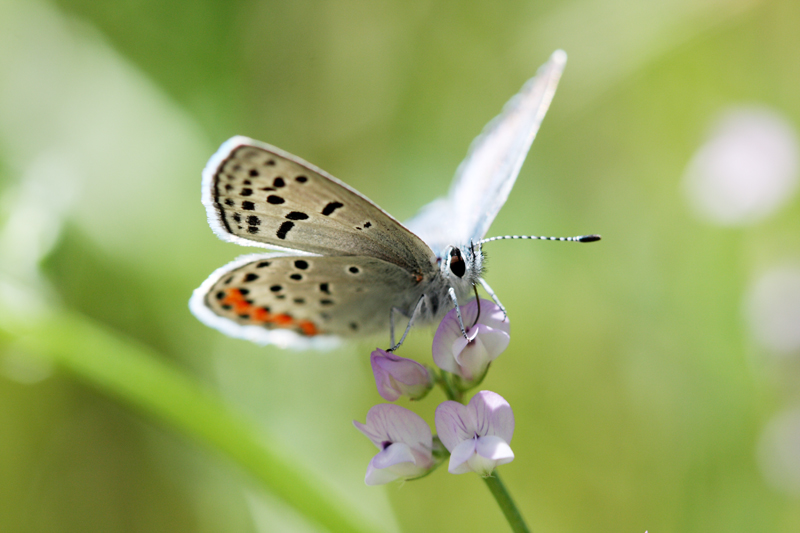
მდაბიოს ACMO
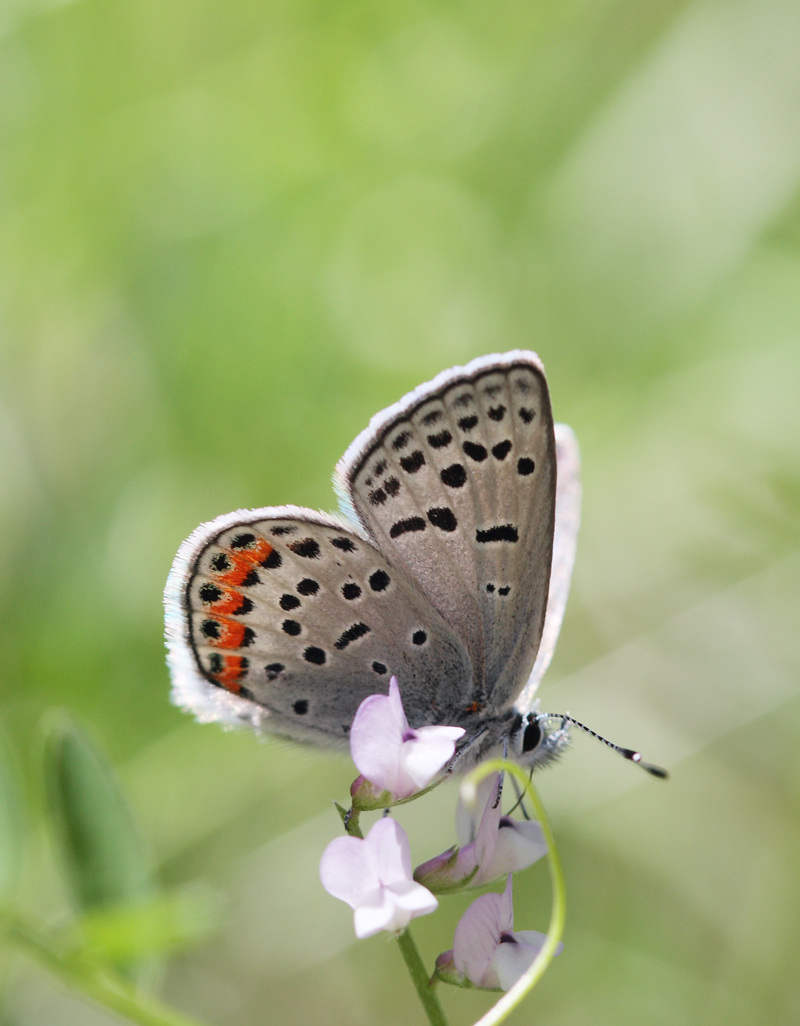
მდაბიოს ACMO

Ethmia arctostaphylella on Eriodictyon sp.
One interesting note on Ethmia arctostaphylella – the name is a misnomer, it does not actually feed on Arctostaphylos (Manzanita). At the time of description in 1880 Walsingham had found larvae pupating on leaves of manzinata and assumed it was their host plant. In Jerry Powell’s stunning monograph of the group he indicates this moth was reared from Eriodictyon – which happens to be the flower the moth is perched on. The two plants grow side by side, and it’s pretty easy to see how a wandering caterpillar finds its way onto a neighbor.
|
სკეპტიციზმის
|













